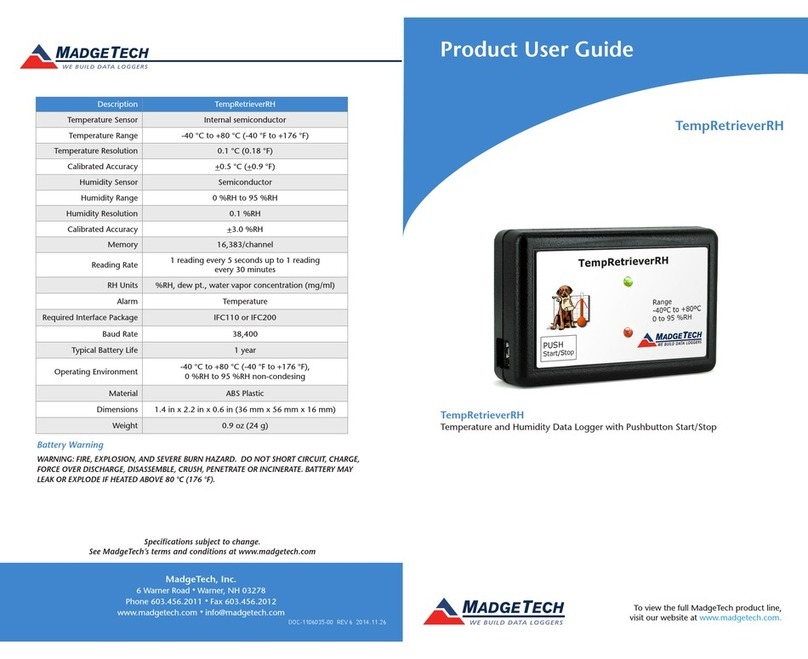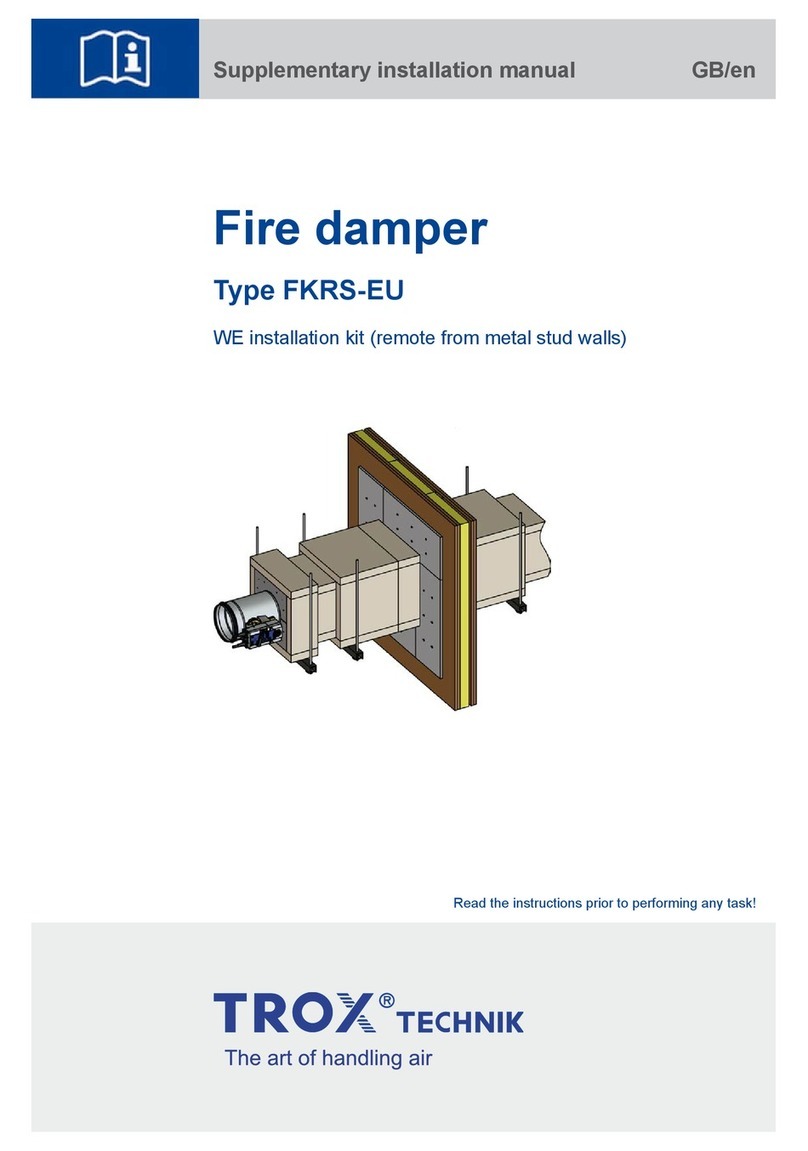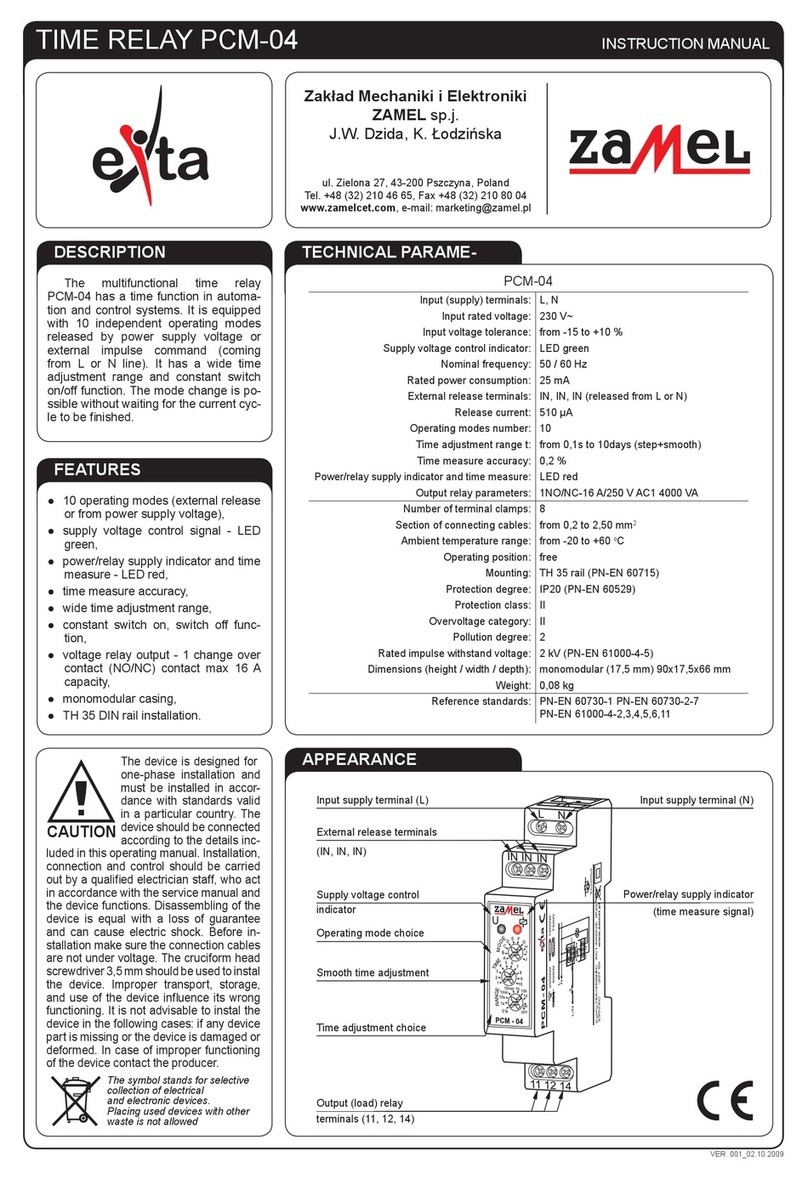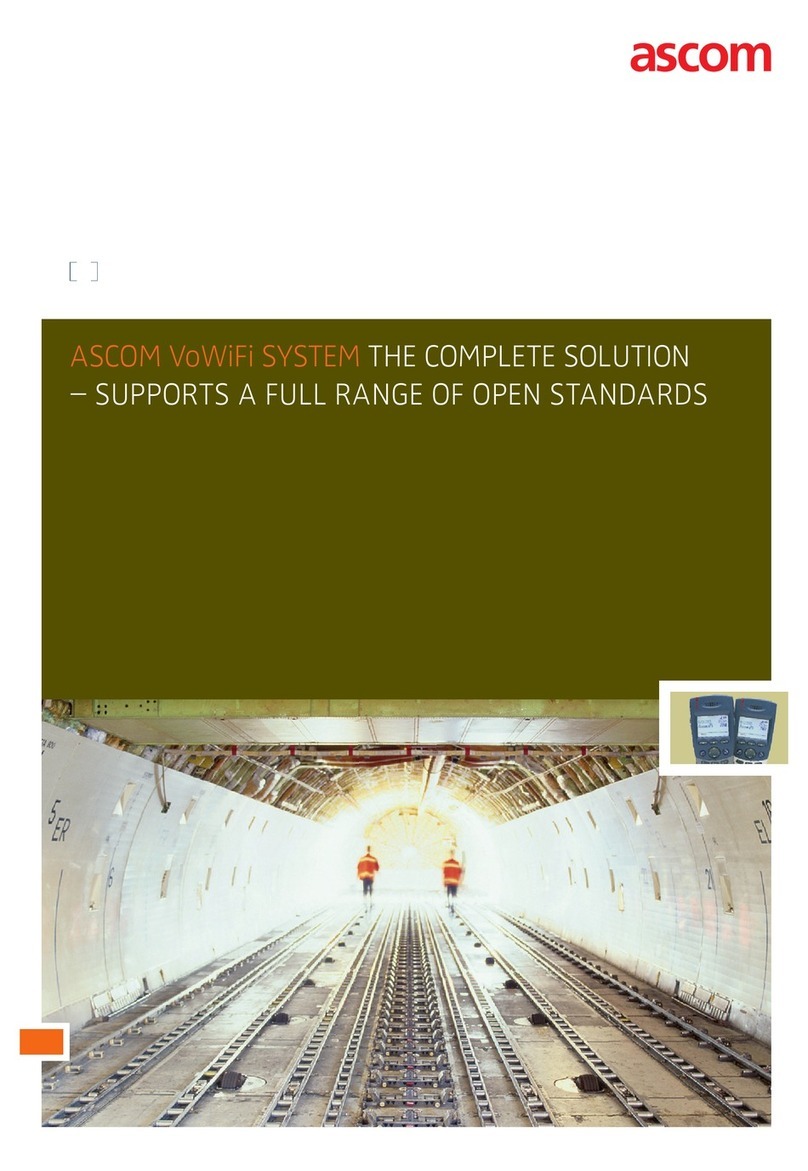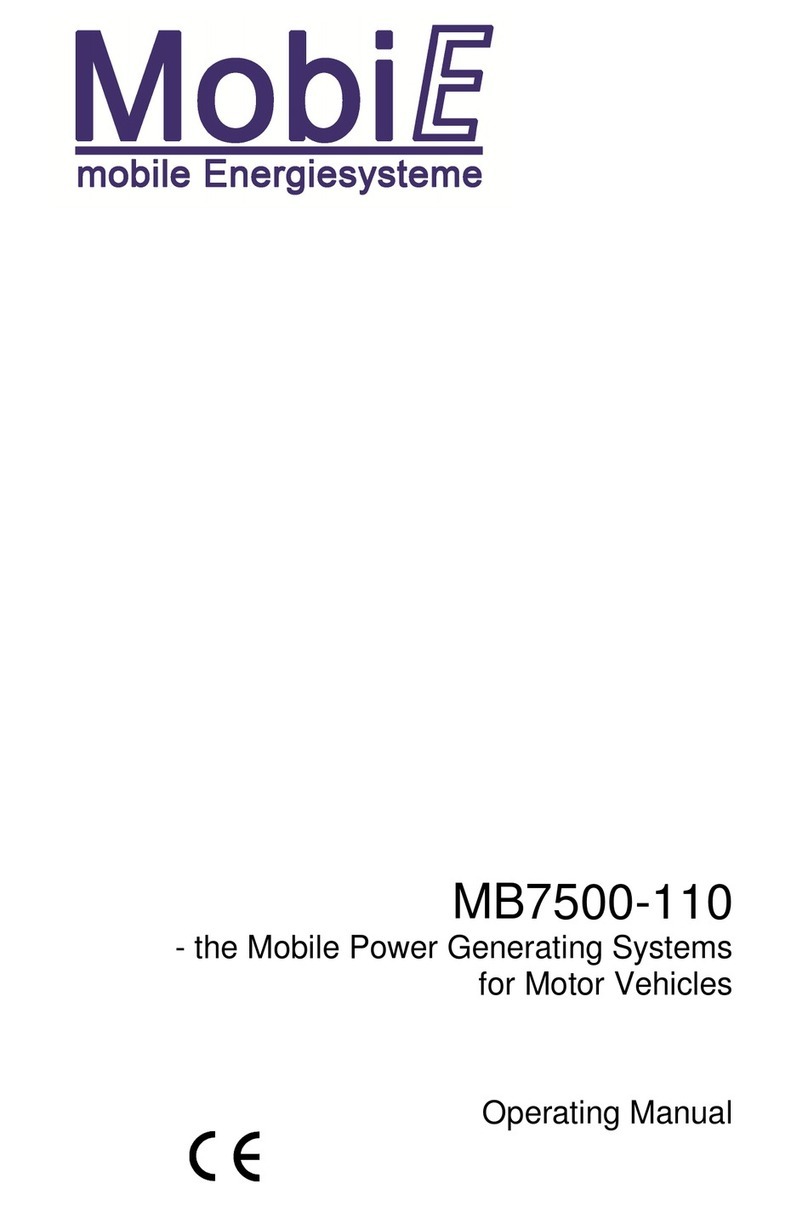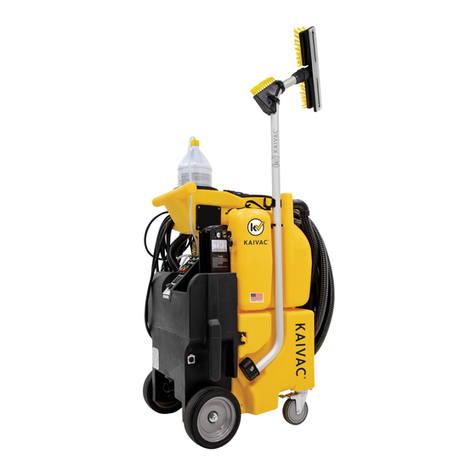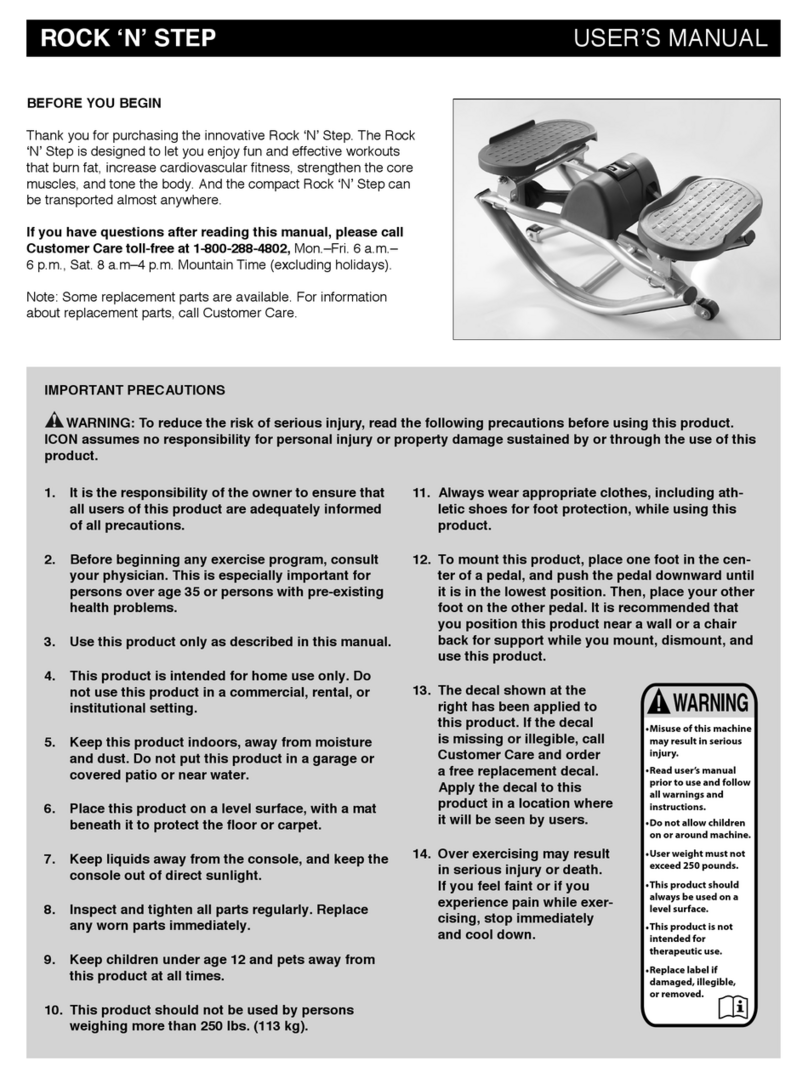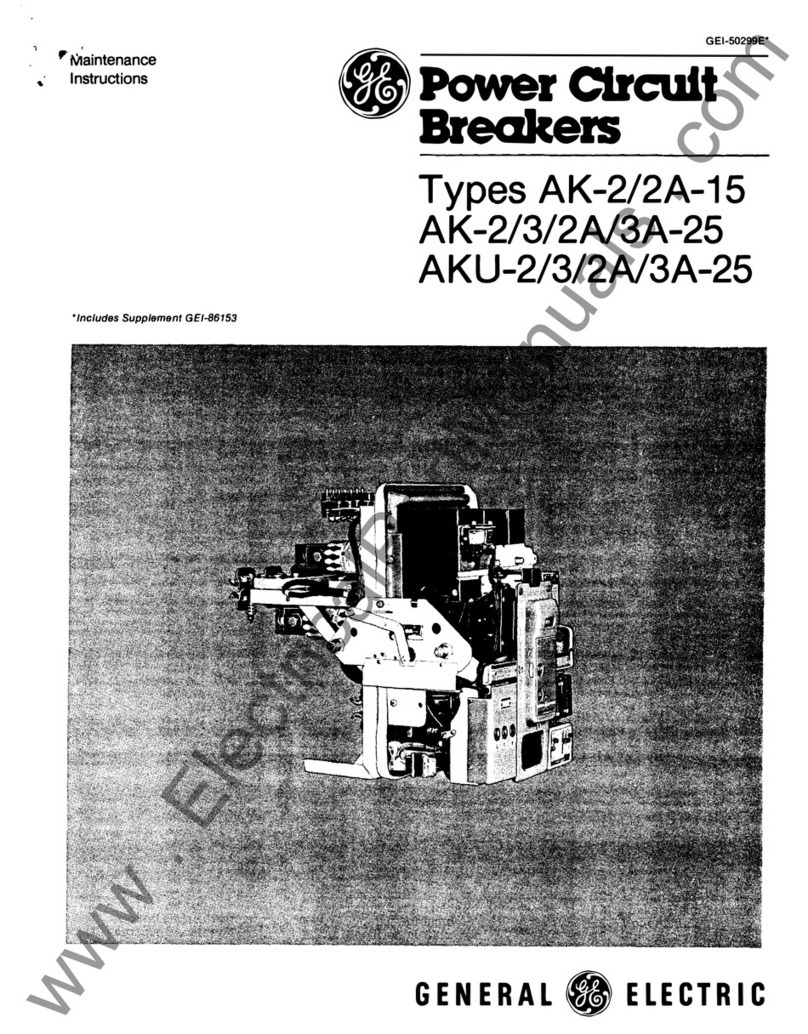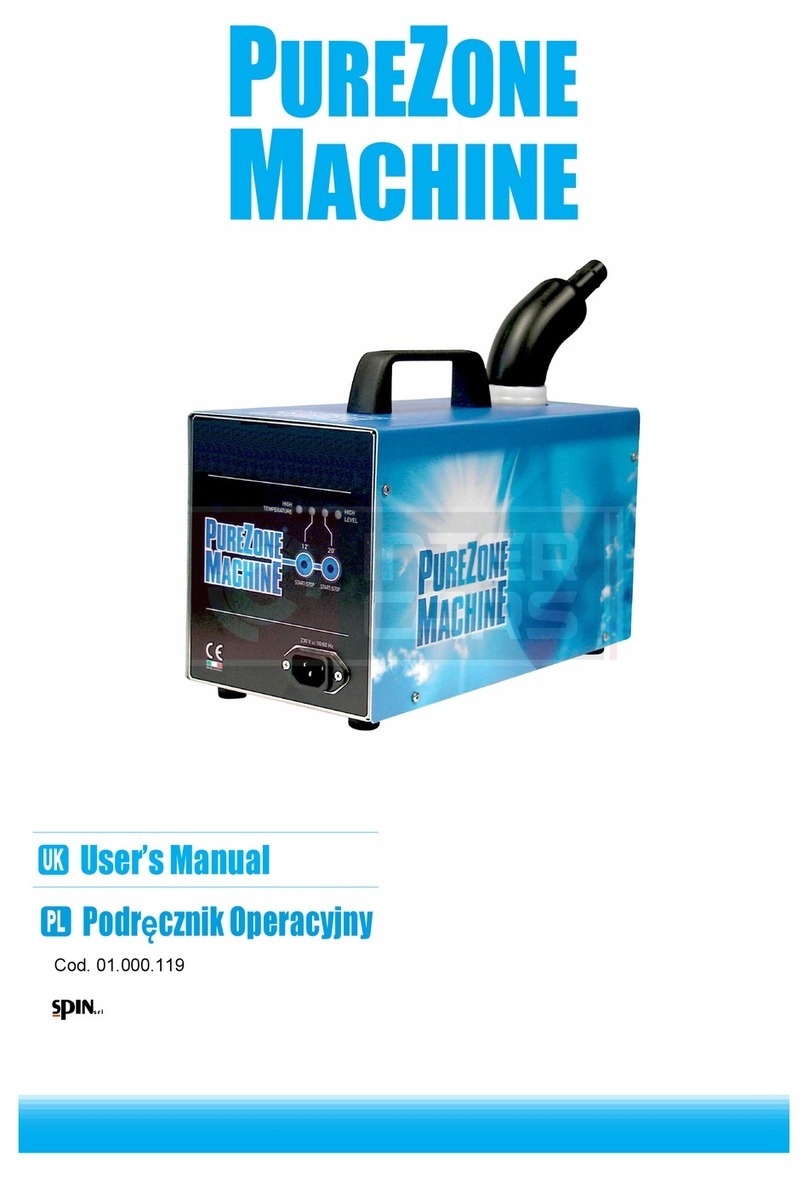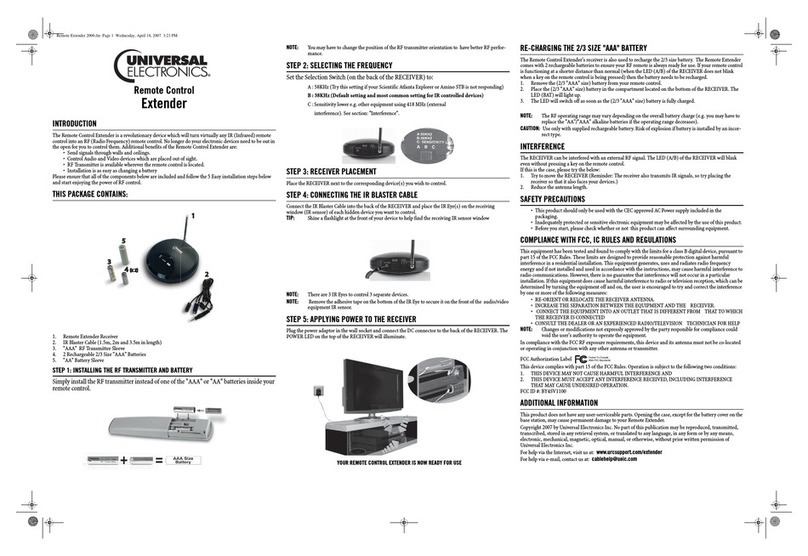Elka ES 30 User manual

Installation and operating instructions
Barriers
ES 25 – ES 25 HS - ES 30 – ES 40
Contents page
1 Technical Data 2
2 Dimensions 2
3 Installation 3
4 Logic card MO 62 4
4.1 Operating mode 4
4.2 Programming the MO 62 5
5 External electrical connections 5
6 Fault finding 7
7 Layout in the barrier 9
8 Extra equipment 10
8.1 Folding boom 10
8.2 Swinging support 12
9 Radio remote control 13
10 Induction loop examples 14
11 General notes to safety 16

© 1999 ELKA-Torantriebe GmbH & Co. Betriebs KG page ES 25, ES 30, ES 40
2
1. Technical data
ES 25 ES 25 HS ES 30 ES 40
Mains supply 230 V 50 Hz 230 V 50 Hz 230 V 50 Hz 230V 50 Hz
Drawn power 0.37 kW 0.37 kW 0.25 kW 0.26 kW
Max. current 2.5 amp 2.5 amp 2.5 amp 2.5 amp
Duty cycle 100% 100% 100% 100%
Running time ca. 1.4 s ca. 0.9 s ca. 2.3 s ca. 3.2 s
Maximum boom length 2,500 mm 2,500 mm 3,000 mm 4,000 mm
Effective length 2,280 mm 2,280 mm 2,780 mm 3,780 mm
Size (w x h x l) 350x1,100x300 mm 350x1,100x300 mm 350x1,100x300 mm 350x1,100x300 mm
Reversing on obstacle switchable switchable switchable switchable
Boom weight 4 kg 4 kg 4.7 kg 6 kg
Barrier weight 47.5 kg 47.5 kg 47.5 kg 50 kg
Foundation (on site) 550 x 500 mm 550 x 500 mm 550 x 500 mm 550 x 500 mm
Controller MO 62 MO 62 MO 62 MO 62
2. Dimensions

© 1999 ELKA-Torantriebe GmbH & Co. Betriebs KG page ES 25, ES 30, ES 40
3
3. Installation
a) When you make the concrete foundation lay enough cable or a plastic duct for the cable you need.
The foundation must be at least 800 mm deep with a horizontal surface 500 x 550 mm.
b) Using the template you can, either incorporate bolts in the foundation, or drill holes in the hardened
concrete for heavy-duty plugs. The door side of the template must be toward the road which the barrier
will be closing.
c) As an alternative 2 "U"-profile clamping-irons are delivered with the barrier. This gives more flexibility in
positioning the fastening points and allows the barrier to be lined up exactly as required.
d) Secure the barrier on the foundation.
e) Connect the boom holder to the shaft.
Tighten all screws, the top ones first with 35 Nm.
The enclosed nuts and bolts are a predetermined breaking point
and should only be replaced with the same sorts.
(Bolt M 8 x 50 ISO 4762 12.9, Nut hexagonal M 8-8 ISO 4032)
f) Emergency release by current failure etc. Pull the lever with the
red end which is behind the access panel. The boom can then be
raised manually. To engage the boom again pull the lever and
pull the boom down, the release bolt will then lock at the
appropriate position.
The controller is switched off until the boom is locked at the
operating position.
g) Mount the boom before doing a test run. If necessary adjust the limit switches and the stoppers.
h) The logic board MO 62 is connected to the terminals (X1) in the barrier and to the microswitches in the head.
All electrical connections should be carried out at the front of the terminals (X1). The barrier is ready for use
when delivered. The running time and a ‘stay open’ time of 5 seconds are stored in an eeprom. You only
require the programming mode if the time to stay open (when automatic closure is being used) is to be
altered, or when a logic card is replaced.
Switch off the mains supply before altering the operating mode dip switches!
Pull out the fuse-holder where mains supply is connected to X1
4. Logic card MO 62

© 1999 ELKA-Torantriebe GmbH & Co. Betriebs KG page ES 25, ES 30, ES 40
4
4.1. Operating mode
Switch off the mains supply before
altering the dip switches for operating mode.
S1 (Stop)
S1 on: Logic is switched off.
S1 off: Logic is working.
S2 (Warning before opening)
S2 on: Four seconds warning before opening.
S2 off: No warning before opening.
S3 (Warning before closing)
S3 on: Four seconds warning before closing.
S3 off: No warning before closing.
S4 (Automatic closure when the stored time has elapsed)
S4 on: The barrier closes after the time which was learned (from 5 secs. up to 10 mins.).
S4 off: No automatic closure.
S5 (Reversal on hitting obstacles)
S5 on: The closing boom stops when it hits an obstacle and only moves when a new order is received.
S5 off: The closing boom stops when it hits an obstacle and re-opens immediately.
S6 (Counting)
S6 off: No counting. The barrier closes after one signal to close, even after two signals to open.
S6 on: Counting activated. The barrier closes after two signals to close if there were two consecutive
opening signals.
S7 (Reversal during opening)
S7 off: The barrier always opens completely before reacting to a signal to close.
S7 on: The opening barrier reverses immediately when it receives a signal to close.
4.2. Programming the controller

© 1999 ELKA-Torantriebe GmbH & Co. Betriebs KG page ES 25, ES 30, ES 40
5
This is only necessary if saved times are to be changed, or on replacement of the logic board. On delivery
5 seconds open before automatic closure and the running time for the barrier are already saved.
a) Open and close the barrier with the push buttons. This is to ensure that both limit switches are working.
Programming can only be carried out when the controller recognises both limit switches.
b) A time to stay open for automatic closure must be learned, but only takes effect when automatic closure
is activated. (Operating mode switch 4 on)
c) Push the learn button approx. 3 seconds - the red diagnostic LED starts flashing.
d) Push the learn button - the barrier opens and the time required is saved.
e) The diagnostic LED flashes at 1 second intervals. Push the learn button when the required time to stay
open has elapsed. The barrier closes and the appropriate open time and running time are saved.
f) The diagnostic LED lights for a short time to confirm saving data and the controller then switches to
operating status.
g) All information is saved in an EEPROM and is available after current failure.
5. External connections

© 1999 ELKA-Torantriebe GmbH & Co. Betriebs KG page ES 25, ES 30, ES 40
6
Function n.c. / n.o. LED Connect to terminals
Single push button (serial switching) n.o. BT lit 5 bottom and 5 top
Opening with push button ‘open’ n.o. BTA lit 2 bottom and 6 top
Opening with a loop detector in socket B2. n.o. BTA lit 27 top and 6 bottom (pre-wired)
Closing with push button ‘close’ n.o. BTZ1 lit 2 bottom and 7 top
Closing with loop detector in socket B3. n.c. BTZ2 lit 26 bottom and 7 bottom (pre-wired)
Stop n.c BTS2 out 8 bottom and 8 top
On / Off (or operating mode switch 1) n.o. BTS1 lit 4 bottom and 4 top
Reversing during closing phase n.c LS out 9 bottom and 9 top
Display ‘barrier open’ 24 V 11 bottom and 11 top
Display ‘barrier closed’ 24 V 12 bottom and 12 top
Display ‘no boom’ (Optional extra) 24 V 0 V switched through to terminal 10 top
Display ‘barrier closed’ (e.g. red traffic light) 230 V, 40 W 13 bottom (N) and 13 top (L1)
Display ‘barrier moving’ or warning prior to
movement (e.g. flashing light) 230 V, 40 W 14 bottom (N) and 14 top (L1)
Display ‘barrier open’ (e.g. green traffic light) 230 V, 40 W 15 bottom (N) and 15 top (L1)
Loop detector under the boom
23 bottom and 23 top
2nd loop detector to open the barrier
24 bottom and 24 top
0 V for external equipment
1,2,3 top and 2 bottom
12 V DC max. 0.4 A for external equipment
3 bottom
24 V DC max. 0.4 A for external equipment
1 bottom
Connected before delivery
To control box
Terminal row X1 terminals 4 to 11
plug V15
Terminal row X1 terminals 13 to 22
plug V2
Terminal row X1 terminals 1, 2 and 3
plug V12
Limit switch ‘barrier open’ n.c SEA out plug V6
Switch for display ‘barrier open’ n.o. plug V6
Limit switch ‘barrier closed’ n.c SEZ out plug V5
Switch for display ‘barrier closed’ n.o. plug V5
Stop from emergency release bolt n.c BTS2 out plug V4
Boom missing n.o. plug V4
If a loop detector is used remove the red jumper between the terminals 6 and 10 of the appropriate socket. The
socket B3 is for the loop under the boom and is pre-wired for safety and to close the barrier when a vehicle
leaves the loop. The socket B2 is for a second loop which can be configured with the jumpers at the terminals
X1/25 to X1/27. The works configuration is sufficient for almost all cases.
When all connections are completed and the barrier is closed, only the following LEDs should be lit: LS, BTS2
and SEA, if this is not the case then see page 8.
WARNING: Please check the direction of the connecting rod from the gears. The reversal by obstruction can
only work when the rod always moves to the rear of the housing, never to the door.

© 1999 ELKA-Torantriebe GmbH & Co. Betriebs KG page ES 25, ES 30, ES 40
7
6. Fault finding
6.1. The closed barrier doesn’t react to a signal to open..
Symptom Possible cause Possible solution
The yellow power LED is out. No mains current. Check the mains lead and the fuses.
The red diagnostic LED flashes
non-stop. Programming is started. Carry it out to the end.
The LEDs SEA and SEZ are lit and
the diagnostic LED flashes four
times then a break.
a) Both limit switches are faulty. Replace them.
b) Break in the lead to the limit
switches. Check the lead and plugs V5 and V6.
The red diagnosic LED flashes five
times then a break. Controller failure. Replace the logic card.
The green LED BTS1 is lit. The controller is switched off. a) Operating mode switch 1 off.
b) Switch On/Off switch (X1/4 top and
x1/4) bottom off.
The green LED BTS2 is out. a) The Stop button is pressed. Release the button (X1/8 top and X1/8
bottom).
b) Emergency release is in use. Lock the shaft.
c) Wiring fault. Check the wiring.
The green LED SEA is out. a) Faulty limit switch ‘open’. Replace the limit switch.
b) Wiring fault. Check the wiring to the limit switch
and plug V6 in the control box.
6.2. The open barrier doesn’t react to signals to close
The points in 6.1 can also apply here.
Symptom Possible cause Possible solution
The green LED LS is out. a) Loop detector is activated. Check the detector in socket B3.
b) The red jumper is removed from
terminals 6 and 10 in socket B3,
but the loop detector hasn’t been
inserted.
Plug the detector into the socket or
replace the jumper.
c) Photo-cell is activated. Check it (X1/9 top and X1/9
bottom).
The green LED LS goes on when
photo-cell is activated. Wrong connection, it should be a
break contact. Alter it to n.c.
The green LED BTA is lit. There is a permanent signal to
open. a) Check the ‘open’ button (X1/2
bottom and X1/6 top).
b) Check the loop detector in
socket B2.
The green LED SEZ is out. a) Faulty limit switch ‘closed’. Replace the limit switch.
b) Wiring fault. Check the wiring and plug V5 in the
control box.

© 1999 ELKA-Torantriebe GmbH & Co. Betriebs KG page ES 25, ES 30, ES 40
8
6.3. Fault finding continued
Symptom Possible cause Possible solution
Delay before opening. 4 sec. warning is active. Operating mode switch 2 off
Delay before closing. 4 sec. warning is active. Operating mode switch 3 off
The barrier does the following when it hits an obstacle ...
...switches off. Reversing isn’t activated Operating mode switch 5 off
...tries to carry on closing Torque setting is false. Adjust it.
The boom isn’t vertical when the barrier is open ...
The green LED SEA is out. Limit switch ‘open’ maladjusted, but still
switches. Re-adjust it and the appropriate
mechanical stopper.
The green LED SEA is lit. The red
diagnostic LED flashes twice then
a break.
a) Faulty limit switch ‘open’. Replace it.
b) The limit switch ‘open’ is
maladjusted and doesn’t switch. Re-adjust it and the appropriate
mechanical stopper.
The boom isn’t horizontal when the barrier is closed ...
The green LED SEZ is out. Limit switch ‘closed’ maladjusted, but
still switches. Re-adjust it and the appropriate
mechanical stopper.
The green LED SEZ is lit. The red
diagnostic LED flashes three times
then a break.
a) Faulty limit switch ‘closed’. Replace it.
b) The limit switch ‘closed’ is
maladjusted and doesn’t switch. Re-adjust it and the appropriate
mechanical stopper.
The red diagnostic LED flashes the error code continuously until the fault is eliminated. After
eliminating the fault the LED flashes until the barrier has completed one duty cycle and then goes out if
all functions are correct.

© 1999 ELKA-Torantriebe GmbH & Co. Betriebs KG page ES 25, ES 30, ES 40
9
7. Layout

© 1999 ELKA-Torantriebe GmbH & Co. Betriebs KG page ES 25, ES 30, ES 40
10
8. Optional extras
8.1. Folding boom
All numbers refer to the drawing on page 11.
Determine the length of the vertical part of the boom. The length (L3) should not be longer than the distance
from the deck to the ceiling (L1) minus 945 mm. The maximum vehicle height (L2) is the ceiling height (L1)
minus 160 mm.
a) Screw the support (6) with the internal reinforcing plate (7) onto the barrier casing.
b) Saw the boom into two pieces with the appropriate length.
c) Cut off 140 mm from the rubber tube from the horizontal part of the boom.
d) Using the four M 6 x 40 bolts, secure the side plates (3) on the horizontal part of the boom where the
rubber was removed.
e) Screw the short end of the pivot bolt (13) onto the support (6)
f) Push the short brass bush (24) and the bearing (8) onto the pivot bolt and secure them.
g) Push the bearing (9) into the sawed off end of the vertical part of the boom. Secure it with a self tapping
screw at the lower end and an M5 hex. socket screw on the upper end.
h) Fit the bearing (9) between the side plates (3) with a long brass bush and an M8 x 55 bolt.
j) Fit the connecting rod (5) with a long brass bush between the side plates (3).
k) Mount the boom on the barrier.
l) Push the connecting rod into the bearing (8).
m) Hold the second part of the boom horizontal and clamp the connecting rod with the grub screws.
n) Pull out the emergency release bolt and push the boom into the vertical.
o) Align the horizontal part by moving the pivot screw (13) up or down.
p) Check that all screws are tight.
q) Cut off the superfluous part of the connecting rod.

© 1999 ELKA-Torantriebe GmbH & Co. Betriebs KG page ES 25, ES 30, ES 40
11

© 1999 ELKA-Torantriebe GmbH & Co. Betriebs KG page ES 25, ES 30, ES 40
12
8.2. Swinging ‘pogo stick’ support for ES 40
a) Close the barrier.
b) Using the screws ‘B’, connect the upper and lower parts in the approximate length.
c) Remove about 500 mm of the rubber tubing under the boom and push the two square nuts ‘A’ into
the slot. Secure it with the two hex. socket screws.
d) Push the rubber tube into the slot and cut off the protruding part.
e) A fine adjustment of the length can now be made on the foot ’D’.
f) Screw an M4 screw into the hole ‘E’.
g) The foot can now be screwed to the appropriate position.

© 1999 ELKA-Torantriebe GmbH & Co. Betriebs KG page ES 25, ES 30, ES 40
13
9. Setting personal code in the K Type radio remote control
Example A) Receiver using the code switches on the logic board : MO 33, MO 43 or MO 542
or receiver with code switches in conjunction with the boards : MO 32, MO 42, MO 52Z2, MO 60 or MO 62
Follow the example in the diagram below.
Transmitter SK, SKX and SKI in conjunction with K Type receivers using code switches.
The switches 1 to 7 in transmitter and receiver must have the same settings. The switches 8 and 9 of the
receiver allocate a channel appropriate to the button of the transmitter. The switches 8 and 9 in
multi - channel transmitters and receivers must be set at 0.
The examples on the right in the diagram above show the allocation of a channel with a one - channel
transmitter using the switches 8 and 9 as in the receiver.
Example B) Receivers without code switches : Logic boards MO 34 or MO 55
These receivers learn the code from the transmitter as described in the paragraph ‘Learning personal code’ in
these installation instructions.
Example C) Combination of examples A and B
A garage door opener with MO 55 and a swing gate opener with either MO 32 or MO 33.
1.) Set the code of the transmitter and receiver for the swing gate opener as described above. Switches 1
to 7 have the same settings in both transmitter and receiver. The switches 8 and 9 set at 0.
The swing gate opener now receives signals from the first button of the transmitter.
2.) You can now allocate the second button to the garage door opener by going through the procedure
described in the installation instructions for the garage door opener in the paragraph ‘Learning
personal code’.

© 1999 ELKA-Torantriebe GmbH & Co. Betriebs KG page ES 25, ES 30, ES 40
14
10. Loop detector examples
Push button, key switch, card reader, coin selector, etc.
This loop is under the boom and is connected to the loop detector in socket B3
in the barrier.
This loop is always connected to socket B2 in the barrier.
Photo-cell
Example 1
Entrance and Exit: opening with push button. Safety and closing with the loop detector on socket B3. All
jumpers at default settings.
Example 2
Entrance: opening with a key switch. Safety and closing with both loops.
Exit: opening with B2. Safety and closing with both loops. All jumpers at default settings.
Example 3
Entrance: opening with B2. Safety and closing with B3.
Exit: opening with coin selector. Safety with B2 and B3, closing with B2. All jumpers are at default settings
B3
B2

© 1999 ELKA-Torantriebe GmbH & Co. Betriebs KG page ES 25, ES 30, ES 40
15
Example 4
Entrance and Exit: opening with card reader. Safety with photoelectric barrier and loop B3. Automatic closure
when the time to stay open has elapsed. Remove the jumper between 9 top and 9 bottom and connect the
safety contact to them. All jumpers are at the default settings.
Example 5
Entrance and Exit with card reader: the loop B2 allows use of the card reader only when a vehicle is on the loop.
The loop B3 is for safety, and closing when the vehicle leaves the loop. The jumpers are at the default settings.
Remove the jumper between 6 bottom and 27 top and connect the contact from the card reader here. The red
jumper on socket B2 between terminals 6 and 10 must remain in place.

© 1999 ELKA-Torantriebe GmbH & Co. Betriebs KG page ES 25, ES 30, ES 40
16
11. General Notes to Safety
These operating instructions must be available on site at all times. It should be read thoroughly by all
persons who use, or service the appliances. Improper usage or servicing or ignoring the operating
instructions can be a source of danger for persons, or result in material damage. If the meaning of any
part of these instructions isn’t clear, then please contact ELKA Torantriebe GmbH & Co. Betriebs KG
before you use the appliance.
This applies to all setup procedures, fault finding, disposal of material, care and servicing of the
appliance.
The accident prevention regulations and applicable technical regulations (e.g. safety or electrical) and
environment protection regulations of the country in which the appliance is used also apply.
All repairs on the appliances must be carried out by qualified persons. ELKA Torantriebe GmbH & Co.
Betriebs KG accepts no liability for damage which is caused by using the appliance for purposes other
than those for which it is built.
ELKA Torantriebe GmbH & Co. Betriebs KG cannot recognise every possible source of danger in
advance. If the appliance is used other than in the recommended manner, the user must ascertain
that no danger for himself or others will result from this use. He should also ascertain that the planned
use will have no detrimental effect on the appliance itself. The appliance should only be used when all
safety equipment is available and in working order. All faults which could be a source of danger to the
user or to third persons must be eliminated immediately. All Warning and Safety notices on the
appliances must be kept readable.
All electrical periphery equipment which is connected to the appliance must have a CE Mark, which
ensures that it conforms to the relevant EEC regulations. Neither mechanical nor electrical alterations
to the appliance, without explicit agreement of the manufacturer, are allowed. All alterations or
extensions to the appliance must be carried out with parts which ELKA Torantriebe GmbH & Co.
Betriebs KG have defined as suitable for such alterations, and be carried out by qualified personnel.
Any contravention of these conditions revokes the manufacturer’s guarantee and also the CE Mark
and the user is alone responsible for the consequences.
Our service department is available to answer all queries about these conditions and, of course, about
our appliances.
We reserve the right to make technical improvements without prior notice.
This manual suits for next models
3
Table of contents

